Apr 18, 2025
5 min read
Classical music is a timeless art form that spans centuries of creativity and innovation. It has changed a lot over the years, with different types of classical music being created in different eras.
In this article, we will introduce the different types of classical music and the different types of classical music genres. We will also learn how to make different genres of classical music. This will help you to learn more about this traditional music.

Part 1: What is Classical Music?
Classical music is a broad genre. It refers to a tradition of art music developed over centuries. This music was primarily created in Western culture. Unlike popular or folk music, classical music follows a set structure, with sophisticated harmonies and complex instrumental arrangements.
Key Characteristics of Classical Music Genres
Some of the defining characteristics of classical music are:
● Use of Notation: Classical compositions are written in musical notation to be played as the composers intended.
● Instrumentation: Often features orchestras, string quartets or solo instruments such as piano and violin.
● Harmonic and Melodic Complexity: Compared to popular music, classical pieces have complex melodies and harmonies.
● Formal Structure: Works often follow traditional forms such as sonatas, symphonies or concertos.
Evolution and History of Classical Music
Classical music has developed through several historical periods, each contributing unique styles and innovations:

● Medieval(500-1400): Gregorian chant and early polyphony.
● Renaissance(1400-1600): Richer textures and choral music flourished.
● Baroque(1600-1750): Ornamental melodies and the rise of opera(e.g. Bach, Vivaldi).
● Classical(1750-1820): Balanced, clear structures(e.g. Mozart, Haydn).
● Romantic(1820-1900): Expressive, emotional compositions(e.g. Beethoven, Chopin).
● Modern & Contemporary(1900-present): Experimentation with tonality and new forms(e.g. Stravinsky, Glass).
Part 2: Major Types of Classical Music
1. Orchestral Classical Music
Orchestral music is written for a full orchestra, including strings, woodwinds, brass, and percussion.
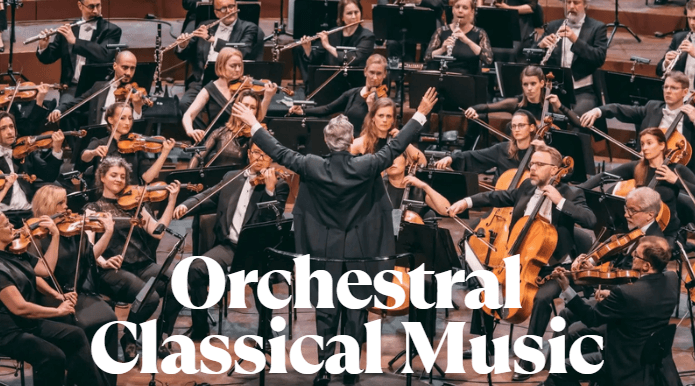
● Symphonies: Large-scale works, usually in four movements(e.g. Beethoven's 9th Symphony).
● Concertos: Featuring a solo instrument with orchestral accompaniment(e.g. Vivaldi's The Four Seasons).
● Overtures: Short, introductory orchestral pieces, often preceding operas.
2. Chamber Music
Chamber music is designed for small ensembles with one player per part. It is intimate yet complex.
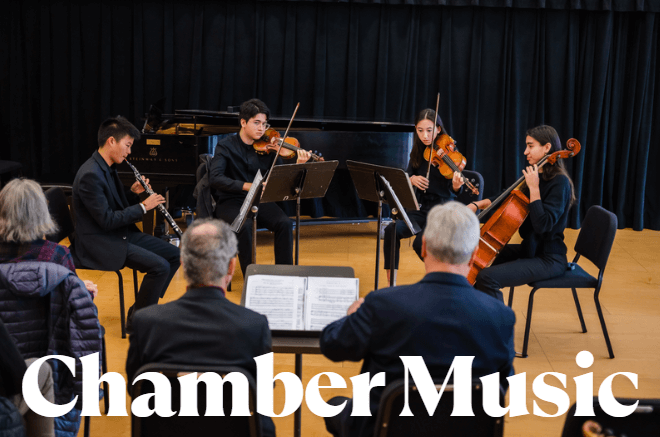
● String Quartets: Featuring two violins, a viola and a cello.
● Piano Trios: Combining piano, violin and cello.
● Wind ensembles: Including instruments such as clarinets and flutes.
3. Vocal and Choral Classical Music
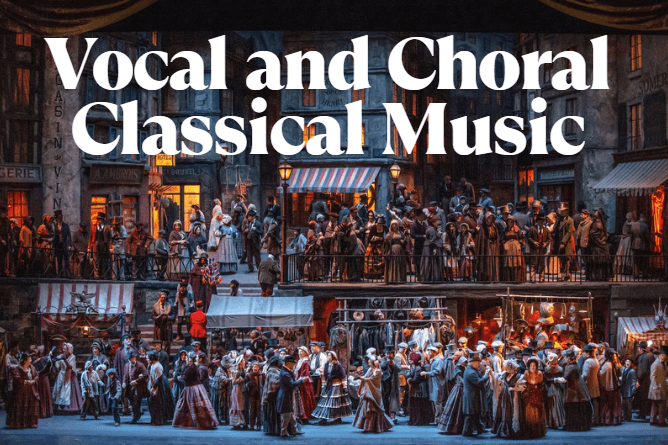
● Operas: Dramatic stage works that combine singing and orchestral music(e.g. Verdi's La Traviata).
● Masses: Sacred choral works(e.g. Mozart's Requiem).
● Lieder: songs for voice and piano, often in German(e.g. Schubert's Erlkönig).
4. Solo Instrumental Music
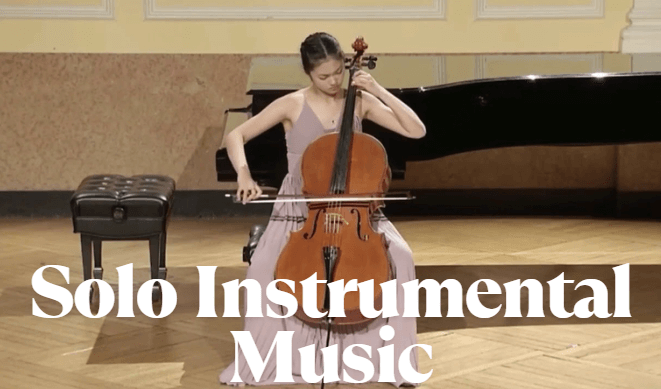
● Sonatas: Multi-movement works for a solo instrument, often the piano(e.g. Beethoven's Moonlight Sonata).
● Etudes: Designed to develop technical skills(e.g. Chopin's Etudes).
5. Religious and Sacred Music

● Gregorian Chant: Monophonic liturgical music from the Middle Ages.
● Oratorios: Large-scale religious works similar to operas but without staging(e.g. Handel's Messiah).
Part 3: Classical Music Genres & Styles
1. Classical Music by Era
Each period of classical music has its own stylistic characteristics:
● Baroque(1600-1750): Complex counterpoint, ornamentation(e.g. Bach, Handel).
● Classical(1750-1820): Clarity, balanced phrasing(e.g. Mozart, Haydn).
● Romantic(1820-1900): Expressive, dramatic(e.g. Tchaikovsky, Chopin).
● Modern(1900-present): Atonality, minimalism(e.g. Stravinsky, Philip Glass).
2. Popular Classical Music Genres
● Neoclassicism: A return to classical forms with modern harmonies(e.g. Prokofiev).
● Impressionism: Dreamy harmonies and colourful textures(e.g. Debussy).
● Minimalism: Repetitive patterns and gradual changes(e.g. Steve Reich).
3. Key Differences Between Classical Music Genres
The following table compares different classical music types:
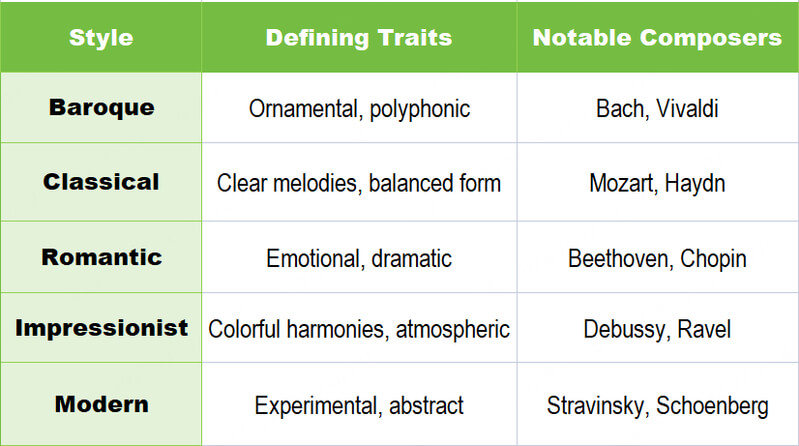
Part 4: How to to Create Different Classical Music?
In the previous sections, we learned the main types and genres of classical music - from the structured elegance of the Classical sonata to the expressive depth of the Romantic symphony.
But you may be wondering: Can someone with no musical skills actually make music in these styles? Thanks to modern technology, the answer is yes.
With AI tools like Musicful, anyone can create authentic classical compositions in minutes - no music theories required! Just type in the text and get the song you want!
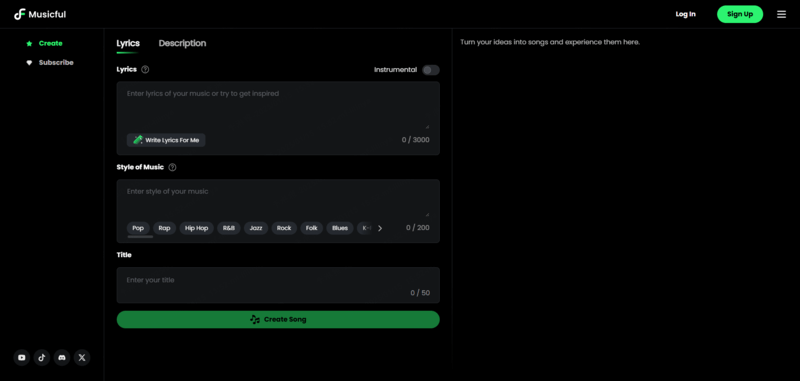
We'll show you how to create classical music below:
Step-by-Step: How to Create Classical Music with Musicful?
Step1️⃣. Click on the green square below.
Step2️⃣. After log in, choose Lyrics Mode(default mode). Click "Write Lyrics for Me" on "Lyrics" part. Enter the song theme you want to write about like "opera". Then click "Write Lyrics". Wait for a moment, you'll get full lyrics, which can be modified to get what you want.
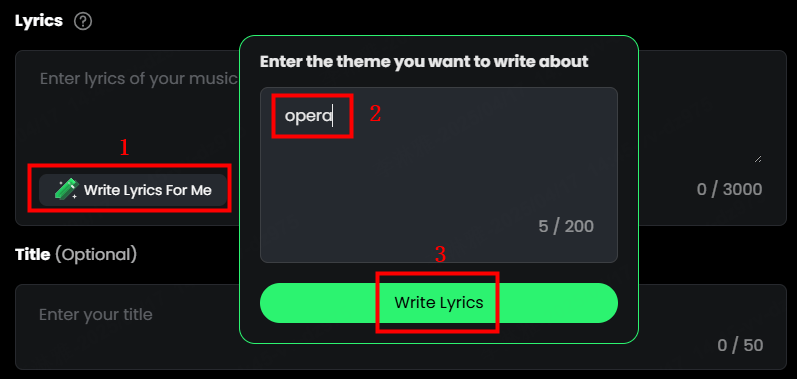
Step3️⃣. Enter your genre or click "More" - "Genre" - "Opera/Classical Music", and add more on the Categories. Here I enter "Classical Music,Opera".
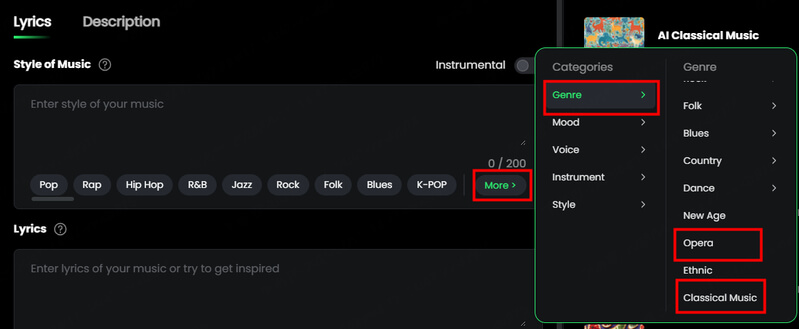
Step4️⃣. You can enter your song title(optional). After clicking "Create Song", you can download the mp3 or MIDI formats. Or copy the link to share with your friends. Enjoy this opera below.
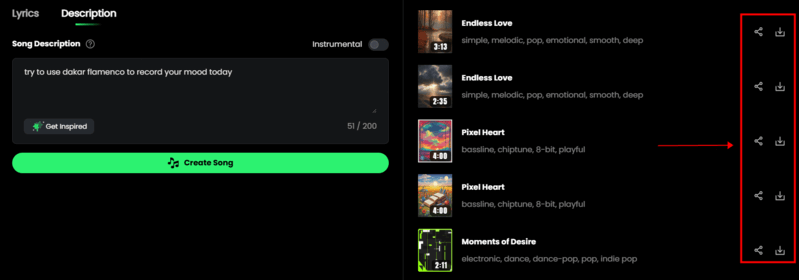
Part 5: FAQ about Genres of Classical Music
1. Are there different kinds of classical music?
Yes, that's right. Classical music is not just one style—it includes many different types, eras, and genres. Classical music can be broken down into different types. The Baroque era is known for its complex melodies, while Romantic music is known for its emotional expressiveness.
Here are some common types of classical music:
● Orchestral pieces: symphonies, overtures, concertos
● Chamber music: string quartets, piano trios
● Vocal pieces: operas, art songs, choral masses
● Solo instrumental pieces: sonatas, études
● Religious or sacred music: oratorios, requiems, chants
Each kind has a different role and is influenced by the time they were written.
2. How do you categorize classical music?
There are several ways to categorise classical music.
1. By Period:
● Baroque(1600–1750)
● Classical(1750–1820)
● Romantic(1820–1900)
● Modern/Contemporary(1900–present)
2. By Genre or Form:
● Sonata, symphony, opera, concerto, suite, fugue, etc.
3. By Ensemble Size
● Solo, duet, trio, quartet, chamber ensemble, full orchestra
4. By Purpose or Setting
● Liturgical music(for worship), concert music(for public performance), or incidental music(for theatre/film)
5. By Style or School
● Impressionist, minimalist, neoclassical, serialist, and more
These categories help musicians, scholars, and listeners better understand and interpret classical works.
3. What are the six models of classical music?
The term "six models" isn't defined in the same way everywhere, but it usually refers to six basic types of classical music that have been very important in the history of the genre.
1. Symphony: A large piece of music for orchestra, usually in four parts.
2. Concerto: A piece of music for a solo instrument, with the orchestra playing along.
3. Sonata: A piece of music for a solo instrument or two people playing together.
4. Opera: A dramatic piece of music that combines words(the libretto) and music.
5. String Quartet: Small group music for two violins, a viola, and a cello.
6. Mass or Oratorio: Sacred music sung by a choir, with religious themes.
These models are studied in music theory and composition, and continue to influence modern classical music.
4. What are the 4 periods of classical music?
The "four main periods" of classical music usually refer to the most important eras in the history of Western art music:
1. Baroque(1600-1750): Ornamentation, counterpoint, basso continuo
2. Classical(1750-1820): Balance, symmetry, clear forms
3. Romantic(1820-1900): Emotion, expanded orchestras, nationalism
4. Modern/Contemporary(1900-present): Innovation, atonality, minimalism
Each period brought new ideas in musical style, instruments and how music should look and sound. These timelines are general guidelines, and the transitions between them were gradual and often overlap.
Conclusion
In short, classical music is a vast and timeless genre with rich history and diversity, and includes more and more new types of classical music genres.
With Musicful, you can create a wide variety of classical music genres, encompassing everything from unique classical types of music to innovative types of classical music pieces.
If you want to learn about different types of classical music or make your own, we hope this article has given you some useful ideas.



